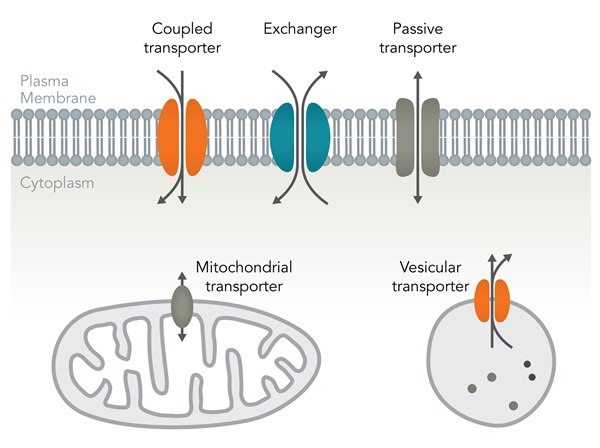Solute carriers overview
Solute carriers are the second largest group of membrane proteins. Current estimates are that there are almost 400 members which can be divided into 52 families.
They can participate in two main forms of transportation:
- Facilitative or passive, where solutes flow with their electrochemical gradient
- Secondary active transporters, which allow solutes to move against their electrochemical gradient through coupling to a second solute flowing with its gradient.

Due to the diverse nature of the solutes carried by this large family of proteins they are implicated in a wide variety of processes from neurosignalling, nucleoside synthesis and salvage to transportation drugs.
Explore our popular knockout cell lines for Solute Carriers
Order products
Human knockout HAP-1 cells
The single largest bank of isogenic cell lines with over 7,500 cell lines to choose from and trusted by academia, biotech, and pharma research labs.
Cancer-related cell lines
Choose from over 300 knock-in and knockout cell line models in many standard cancer cell lines such as DLD1, MCF10A, and HCT116.
Cas9 Stable Cell Lines
Simplify gene editing experiments with stably expressing Cas9 cell lines
CRISPRmod CRISPRa dCas9-VPR Stable Cell Lines
Streamline CRISPR activation experiments with stably expressing dCas9-VPR cell lines
